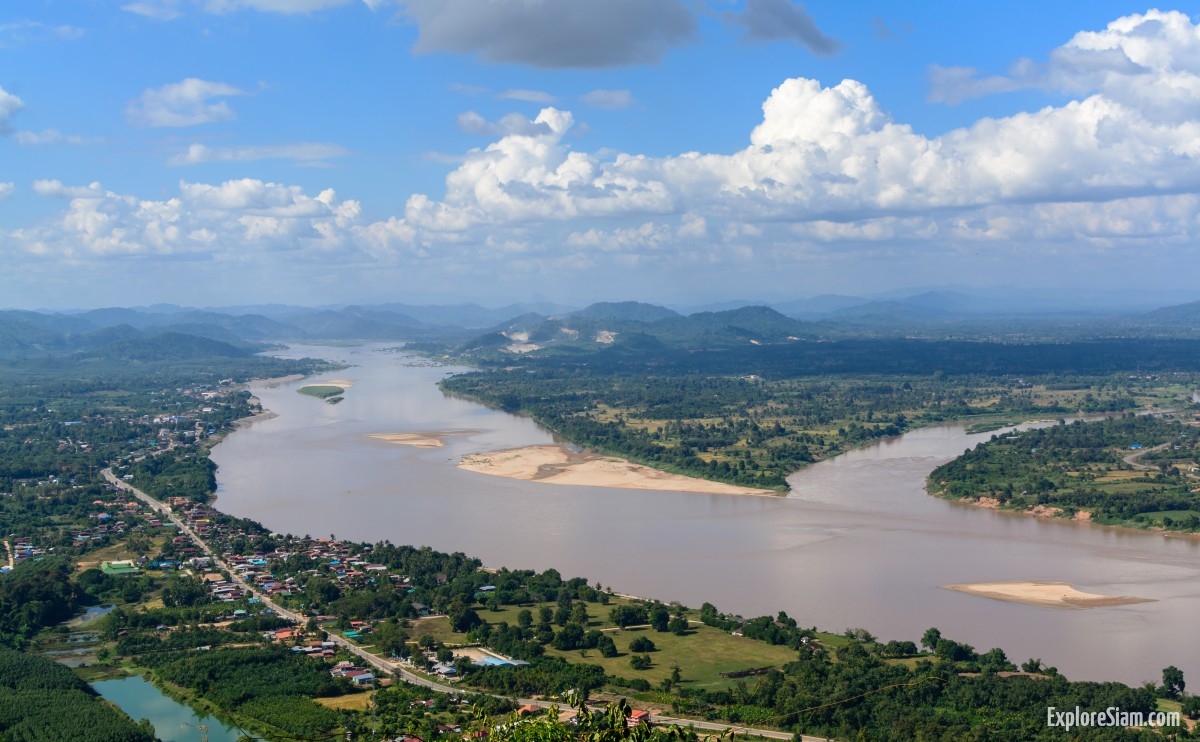The Mekong River, one of the great rivers of the world, meanders through the heart of Southeast Asia, weaving a rich tapestry of life, culture, and history. Originating from the Tibetan Plateau, the river traverses China, Myanmar, Laos, Thailand, Cambodia, and Vietnam, covering a distance of over 4,350 kilometers before it spills into the South China Sea. The Mekong River is more than just a body of water; it is a lifeline that sustains millions of people, a conduit for commerce, and a source of spiritual and cultural significance.
Flowing through diverse landscapes, the Mekong River offers an unparalleled journey through some of the most stunning and varied terrains in the region. In the highlands of Tibet and China, the river rushes through deep gorges and precipitous cliffs, where the rugged beauty of the landscape is a testament to the raw power of nature. As the river descends into Southeast Asia, it widens and slows, passing through lush jungles, fertile plains, and vibrant cities.
The Mekong is integral to the livelihoods of millions who depend on its waters for agriculture, fishing, and transportation. In the fertile Mekong Delta in Vietnam, the river’s extensive network of tributaries and canals creates a verdant landscape that is a major rice-producing region, often referred to as the “rice bowl” of Vietnam. Here, life is intricately linked to the rhythm of the river, with floating markets, stilt houses, and bustling riverside communities painting a vivid picture of daily life.
In Cambodia, the Mekong River is home to the Tonle Sap Lake, one of the world’s most productive inland fisheries. The unique hydrological phenomenon, where the river reverses its flow during the monsoon season, causes the lake to expand and contract dramatically, supporting a rich biodiversity that is crucial for local fishing communities. The cultural heart of Cambodia, Phnom Penh, sits on the banks of the Mekong, where the river’s presence is deeply woven into the fabric of the city.
Further upstream, in Laos, the Mekong flows through a more tranquil and less developed landscape. The serene town of Luang Prabang, a UNESCO World Heritage site, lies nestled along the river’s banks, offering a glimpse into the harmonious coexistence of nature and tradition. The slow pace of life, coupled with the stunning river vistas and golden temples, makes Luang Prabang a haven for those seeking peace and reflection.
Thailand’s northeastern region, known as Isaan, also draws life from the Mekong. The river marks the border between Thailand and Laos, with picturesque towns like Chiang Khan offering panoramic views of the river. Here, the Mekong’s influence is seen in the local cuisine, culture, and daily life, with fishermen casting their nets and farmers tending to their crops along the fertile riverbanks.
The Mekong River’s journey through Myanmar, although shorter, is no less significant. The river’s basin in Myanmar is home to diverse ethnic communities, each with its own unique traditions and ways of life. The river serves as a vital source of sustenance and a means of transportation in this remote region.
As the Mekong winds its way through these countries, it encounters myriad cultures, each adding to the rich mosaic of life along its banks. Festivals and rituals, often centered around the river, celebrate the deep spiritual connection people have with this mighty waterway. The annual dragon boat races, water festivals, and religious ceremonies highlight the river’s role as a source of life, inspiration, and unity.
However, the Mekong River also faces significant challenges. Rapid development, dam construction, and climate change threaten its delicate ecosystems and the livelihoods of those who depend on it. Efforts to balance development with conservation are crucial to preserving the river’s health and ensuring that future generations can continue to thrive along its banks.
In traversing the Mekong River, one embarks on a journey not just through a physical landscape, but through the heart and soul of Southeast Asia. The river’s winding path tells a story of resilience, adaptation, and the enduring bond between humans and nature. From the towering peaks of Tibet to the sprawling delta in Vietnam, the Mekong River remains a timeless symbol of life and continuity in a rapidly changing world.





